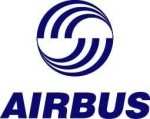Expects Air Traffic To Double In Same Period
 Growing passenger volume will require more efficient,
higher-capacity aircraft in all size categories over the coming 20
years, according to Airbus' latest Global Market Forecast - which
expects airline traffic worldwide to more than double between 2009
and 2028.
Growing passenger volume will require more efficient,
higher-capacity aircraft in all size categories over the coming 20
years, according to Airbus' latest Global Market Forecast - which
expects airline traffic worldwide to more than double between 2009
and 2028.
This latest 20-year forecast was unveiled Thursday during a news
conference in London, England, with Airbus Chief Operating Officer
- Customers John Leahy and Laurent Rouaud, Airbus Senior Vice
President, Market and Product Strategy.
Airbus projects that some 25,000 new passenger jetliners and
freighters will be needed to meet the rising demand for flight
services - representing a market value of $3.1 trillion. These will
include very large aircraft such as Airbus' 21st century flagship
A380, as well as those of the twin- and single-aisle segments.
As the world's airline fleet expands, it also will gradually
increase in aircraft size at an anticipated rate of 1.2 per cent
annually over the next 20 years.
"We need bigger aircraft. We can't just pave the sky
wingtip-to-wingtip with small airplanes - congestion will not allow
that," said Leahy in his briefing to journalists. "We will always
be shifting up to larger aircraft."
Very large aircraft - those with seating for more than 400
passengers - will help alleviate congestion at major airports, and
accommodate growth on existing routes. There will be a demand for
more than 1,700 of these, according to the Global Market Forecast -
with some 1,318 needed to serve the world's 37 dynamic "mega"
cities (destinations with more than 10,000 daily passengers). Due
in part to increased urbanization, Airbus expects the number of
such cities to increase to 82 in the coming 20 years.

Airbus A380
"We anticipate that there will be as many as 200 city pairs
where very large airplanes such as the A380 are going to fly before
2028," said Rouaud.
According the 2009-2028 Global Market Forecast, the number of
new twin-aisle category jetliners and freighters to meet demand is
6,250. The continued growth of low-cost carriers - particularly in
the Asia-Pacific market - will be a primary driver for nearly
17,000 new single-aisle jetliners during the 2009-2028 period,
representing an increase over previous forecasts.
Leahy underscored the significance of low-cost carriers to the
overall market. "They're an important part of the economy," he
said, citing the airlines' growth in Asia, evolution in the United
States and development in Europe.
This emergence of low-cost carriers - coupled with the effect of
increased route liberalization and the accelerating demand from
Asia - will support a continued need for highly reliable and
efficient single-aisle jetliners.

Airbus A320
Overall, the greatest demand for new passenger aircraft and
freighters will be from the Asia-Pacific region - accounting for 31
per cent of the total number, followed by Europe and North America.
Individually, India and China will account for the fastest growth
over the coming 20 years - at 10 per cent and 7.9 per cent,
respectively.
Across all segments, Airbus also foresees a continued trend
towards new-generation and efficient aircraft - with these
jetliners and freighters enabling operators to increase the number
of passengers while reducing overall costs.
 ANN's Daily Aero-Linx (05.02.24)
ANN's Daily Aero-Linx (05.02.24) ANN's Daily Aero-Term (05.02.24): Touchdown Zone Lighting
ANN's Daily Aero-Term (05.02.24): Touchdown Zone Lighting Aero-News: Quote of the Day (05.02.24)
Aero-News: Quote of the Day (05.02.24) ANN FAQ: Contributing To Aero-TV
ANN FAQ: Contributing To Aero-TV NTSB Final Report: Cirrus Design Corp SR20
NTSB Final Report: Cirrus Design Corp SR20





